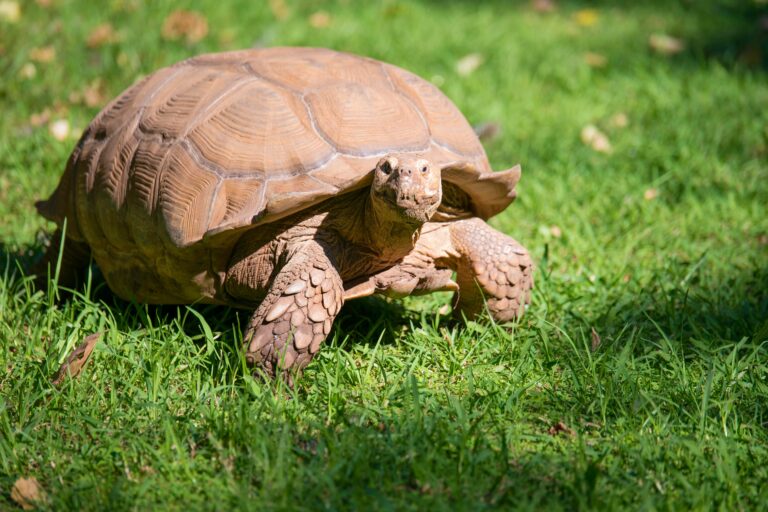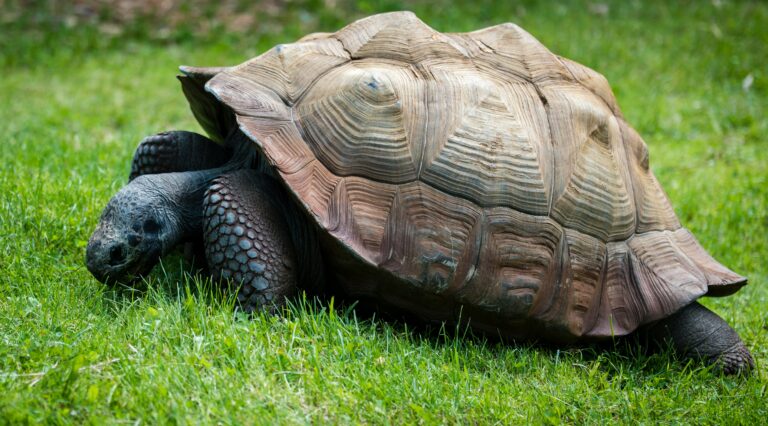Where do Sulcata Tortoises originate from?

Sulcata tortoises, popularly called African spurred tortoises, enthrall admirers all over the world with their magnificent stature, unusual appearance, and calm disposition. But have you ever wondered about the origins of these amazing creatures? In this exciting voyage across time and geography, we investigate the origins of sulcata tortoises, including their natural habitat, evolutionary history, and place in the animal kingdom.
They are native to dry regions of Sub-Saharan Africa, including Nigeria, Mali, Chad, and Senegal. These tortoises have adapted to live in this large region of savannas, scrublands, and semi-deserts, where they face extreme temperatures, little vegetation, and few water sources.
Three ancient types of them:
Geochelone Sulcata: This species was common across Africa during the Pleistocene period and is thought to be the ancestor of contemporary sulcata tortoises.
Geochelone Burchard: An ancient tortoise species discovered in Africa, lived during the late Miocene and early Pliocene epochs.
Geochelone Atlas: While not as ancient as other tortoise species, or contemporary sulcata tortoises, has been around for thousands of years and has older ancestors.

They have adapted to arid conditions, as seen by their behavior and anatomy. Their enormous, domed carapaces assist in regulating body temperature while also protecting them from predators and the weather. Furthermore, they have thick, scaly skin that reduces water loss and allows them to tolerate lengthy periods of drought.
Their nutritional habits are strongly influenced by their natural environment. These herbivorous reptiles mostly consume fibrous plants like succulents, grasses, and herbs in the wild. Their excellent digestive systems enable them to extract moisture and nutrients from coarse, low-quality fodder, letting them flourish in food-scarce situations.
Behavioral Adjustments: They have a variety of behavioral adjustments that help them endure in arid settings. Because they are crepuscular, or diurnal, they are most active in the colder, more bearable hours of the day. During the hottest portions of the day, they take refuge in burrows or under foliage to prevent overheating.
Female sulcata tortoises migrate annually to lay their eggs at nesting locations, making reproduction a crucial part of their life cycle. Usually, nesting takes place in the wet season when the soil is ready for excavation. Female sulcata tortoises make shallow nests in sandy soil and lay a clutch of eggs that incubate for several months until hatching.
Human involvement has had a tremendous impact on sulcata tortoise numbers in their native habitat. Habitat destruction, poaching for the pet trade, and agricultural development all endanger the existence of these reptiles. Conservation efforts are underway to maintain wild populations and encourage sustainable management approaches that will assure their long-term sustainability.

Cultural significance: They are valued as emblems of longevity, wisdom, and tenacity in many African communities. These tortoises are revered as spiritual advisors and land protectors in various civilizations, and they are frequently included in mythology, folklore, and traditional ceremonies.
Sulcata tortoises originated in the ancient environments of sub-Saharan Africa, where they lived for millions of years. These extraordinary reptiles are shaped by evolutionary forces and suited to arid settings, demonstrating resilience and endurance. Understanding their natural history, habitat requirements, and conservation needs will assure the survival of sulcata tortoises for future generations.
Sulcata tortoises are known for their hardiness and endurance despite sparse vegetation and high temperatures. Understanding their origins reveals their unique characteristics and emphasizes the need to protect their natural habitat for future generations.
In Conclusion, the origins of sulcata tortoises in sub-Saharan Africa demonstrate their extraordinary voyage across time and geography. Their relevance in the natural world is highlighted by their evolutionary resilience and ability to adapt to arid settings. Understanding and appreciating their beginnings provides vital insight into their distinct qualities and ecological importance. It is imperative that we, as guardians of biodiversity, understand the significance of protecting their natural habitat and guaranteeing their survival. We can preserve the ancestral habitat of sulcata tortoises and pay tribute to their legacy by engaging in conservation initiatives and practicing responsible management for future generations.
Read More: When a Sulcata Tortoise Full Grown